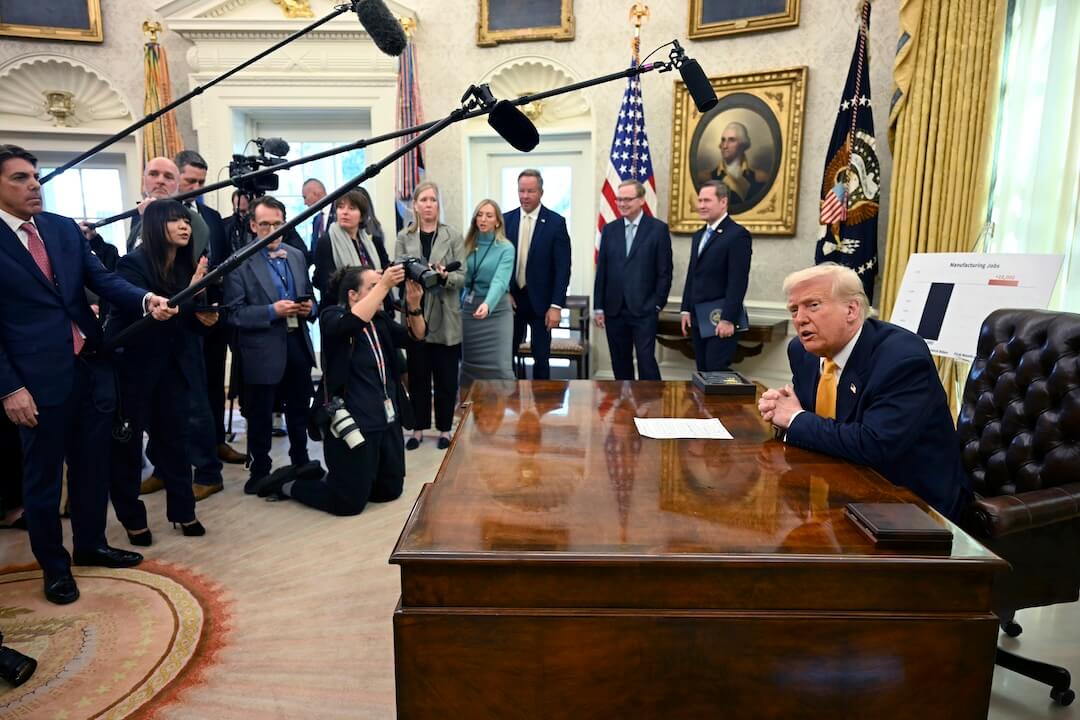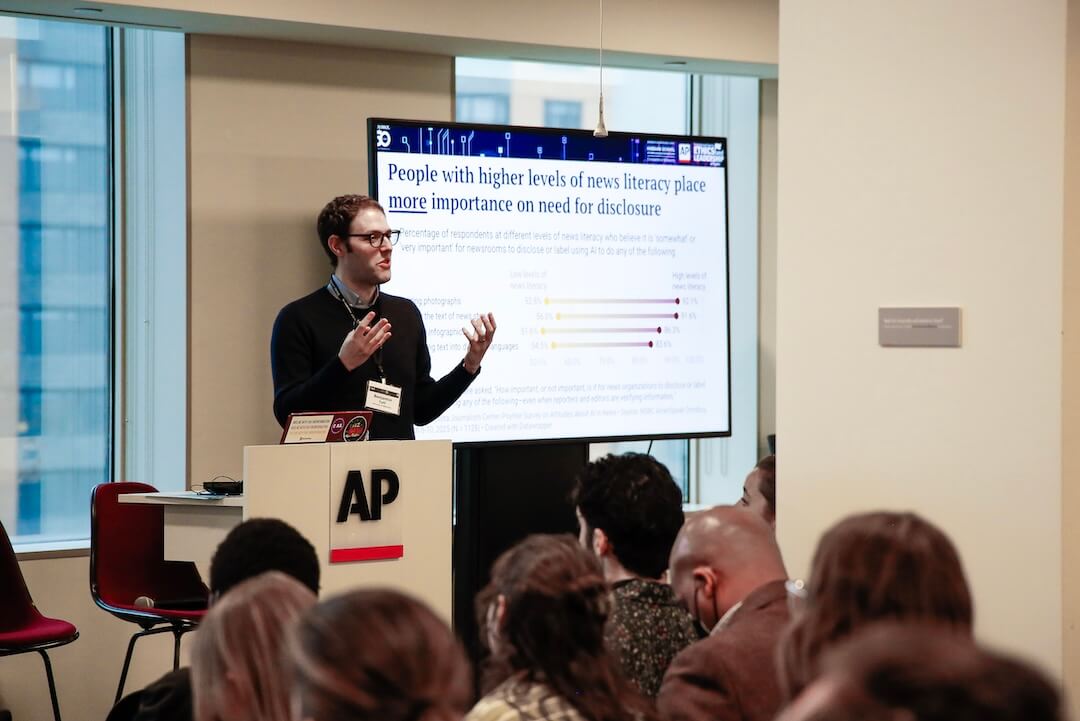Caitlin Johnston and Anthony Cormier spent so much time with a 182-page plan from the Florida Department of Transportation that it became like a bible to them: important, instructive, kind of mysterious and confusing.
But the truth that came out of its pages aren’t the result of thousands of words of copy. It’s revealed, instead, through Legos.
Johnston, a transportation reporter, and Cormier, an investigative reporter at the Poynter-owned Tampa Bay Times, went over the report countless times in a year of reporting on a project that connected Tampa with the nearby city of St. Petersburg.
But in the process of studying the dimensions of the proposed bridges to help with a visualization, they were tipped off on a vital detail that neither they, many lawmakers or transportation planners had ever found before: The department of transportation wasn’t adding a toll lane to the existing lanes, it was taking a lane away.
The complicated mess they discovered is explained today through a very simple medium: Legos.
Legoland Florida
Transportation is one of those beats that affects everyone but doesn’t capture the attention of everyone, Johnston said.
“They don’t want to sit down and read a 30-inch story about a road.”
So as the Times talked about their reporting on the Tampa Bay Express, a toll road project, part of that conversation was how to make their findings more understandable.
Intern Eli Zhang had some ideas.
What would happen if they built a scale model out of Legos? Zhang started playing with 3-D modeling software to calculate how many pieces they’d need to build a scale model based on the master plan from the department of transportation. At that point, everyone knew there was a story in the Tampa Bay Express, but it was a much broader one at the time.
Then, a tip led to another discovery: No one really knew what they were getting with one part of the plan.
Zhang, who grew up in China, had never played with Legos before. He worked in a studio in the photo department, experimenting with how realistic to make the presentation.
He played with dirt and thought about taking the Legos to the beach. But ultimately, he kept it in the studio, shot images, worked them up in Photoshop and stitched them together in production. Times web designer Martin Frobisher helped add polish at the end.
Since the story was published on Thursday, people have asked what software they used, said Adam Playford, director of data and digital enterprise.
“We basically used Eli,” he said.
The data team needs your help (and Legos)
In October, Playford sent out an email to Times staff. They needed regular-looking Lego people.
“We’ve found many Lego-people-packs online,” Playford wrote, “but they all have too many weirdos, like Lego Bananaman and Lego Grim Reaper. Regular Lego people are apparently no longer in vogue.”
Regular Lego people arrived, courtesy of Times staffers.
In the presentation, they illustrate the complicated story and express themselves through emoji thought bubbles.
But what makes the presentation work, Playford said, is the amount of journalism that went into it. In the middle of the project, there’s reporting from more than a dozen meetings. Instead of more than a dozen meeting stories, though, those details are woven into the Lego story with quotes and documents.
After the Times created its 3-D modeling of Orlando’s Pulse nightclub shooting, everyone asked if they’d be doing more with 3-D modeling.
Maybe, Playford said at the time.
With all of their projects, they start with an important story and dig into the reporting, he said. Then, they ask how the visuals can make the story more catchy, more understandable and more concrete.
So, more Legos in the future?
“Honestly,” Playford said, “if we never look at Legos again, I think we’ll be OK.”
Another brick in the wall
The story of the bungled bridge is a small one in a much larger project that will impact everyone in Tampa Bay, Johnston said.
And the Times’ work on the bridge itself has already caused change. Within a week of reporting on how few people really understood what the new bridge would actually look like, the department of transportation backed off the plan and called for it to be revisited. The official involved with the project resigned six weeks later.
For Johnston and Cormier, the reporting continues. Playford, Zhang and Frobisher are working on their next projects. And Lego Tampa Bay is back, for now, in boxes.
Some of the Legos will go to good homes and some will stay packed up in the office, Playford said.
You never know.
“Maybe one day we’ll need more Legos.”







